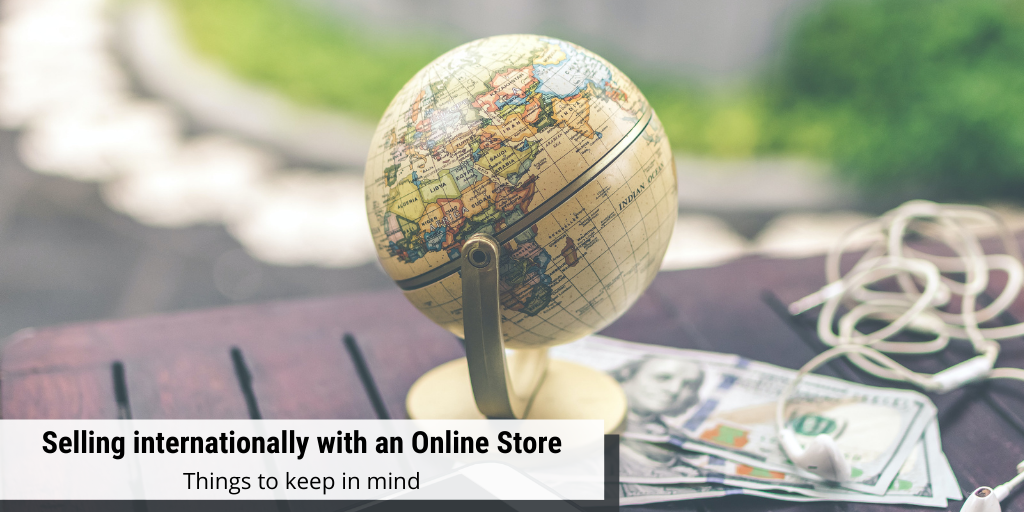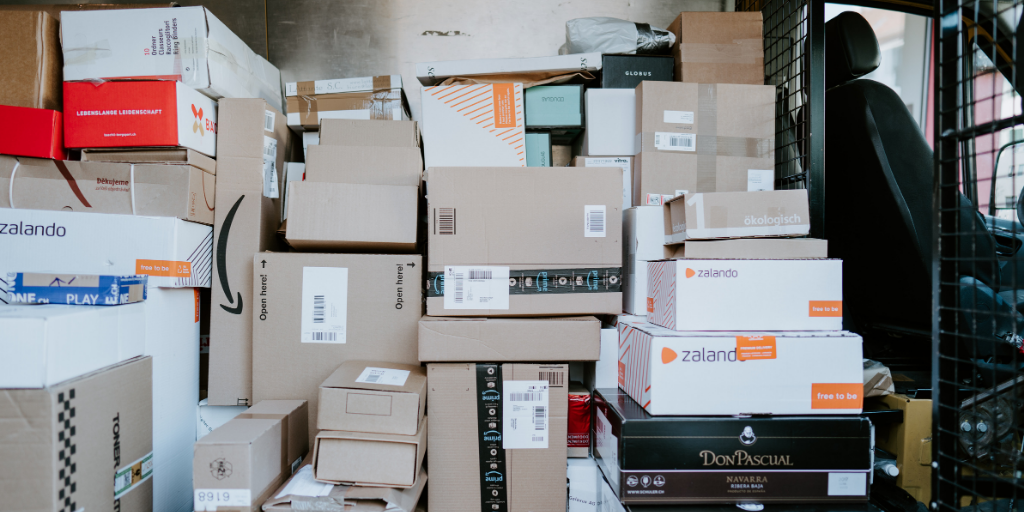Selling internationally with an Online Store

It’s always a good time to think big and across borders. But like everything else, it is important to assess the risk/return ratio before taking the plunge.
Why should I think about selling internationally?
First of all, look at the size of the global market.
According to Forrester, cross-border online sales are expected to exceed $627 billion by 2022 as consumers increasingly turn to international marketplaces to buy products they cannot get in their home countries.
Lack of access to certain goods is one of the biggest factors driving international shopping. Chinese consumers, for example, buy everything from dietary supplements to cosmetics from foreign suppliers online.
The quality of foreign vendors also seems to play a role here. Certain niche products and specialties also have potential for the global market. In addition, better prices and affordable shipping options are considered major drivers of international e-commerce as well, whose trend does not seem to be stopping.
1. Make a plan
Every project needs a plan. If you want to tackle something without a well thought-out plan, you will soon notice how difficult it is to implement. For this reason, foresighted action is absolutely necessary! First of all, make yourself aware of the products, your target group and the market in which you want to be present. Ask yourself the following questions:
- In which market is a demand for the products you want to offer?
- What added value does it offer your potential customers to buy them from you?
- Who are your potential buyers? What characterizes their typical behavior?
- Who are your competitors and how do you want to stand out from them?
You need answers to all these questions in order to assess and develop your idea. A structured approach is essential. Ultimately, you need to know which products can be in demand internationally and in which parts of the world in particular.

2. Choose the right channels
Now that you have created a plan, it is time to think about the different channels you can use
in order to propagate your shop. It is also important to know where the greatest potential is to be found. While Google, Facebook and Instagram can achieve a high level of coverage in most areas of the world, it does not mean that these channels are suitable for every country out there!
Western and Asian marketing strategies differ in their basic features. Google, for example, is not one of the top search engines in China, nor is it in Russia, where Yandex is predominant. Therefore a differentiated marketing strategy would make sense in these countries.
You should also analyze the typical buying behavior in the respective countries. In some countries, purchases via smartphones are dominant, so you should make sure that your store is suitable. As you expand and your business flourishes, you might even think about creating your own app here.
3. Payment methods and Currencies
Essential are the different payment methods you can offer in your store. This is where it is decided, whether a customer completes his purchase or not. It is important to offer the right options for your future markets. If the preferred payment method of online shoppers from a specific country is not available, the chance of sales decreases.
Find out about the most common payment methods in the markets where you want to be present. In Europe Visa, MasterCard or American Express are very popular, while in India cash on delivery, PhonePe and other payment methods are preferred.
You should also pay attention to the security of these providers. Particularly secure service providers not only ensure security and transparency in the processing of a transaction, but also gives your customers a reputable impression of your online store.
You should also know the different currencies. Ideally, you offer your customers the possibility to pay in their local currency. If this is not possible, it is a good idea to display a currency conversion, which gives customers an overview of the upcoming costs.

4. Pay attention to legal regulations
Different markets - different regulations. With new markets that you want to enter, new legal regulations will naturally come up that you should be aware of. Be careful and inform yourself about the different target markets intensively!
Find out about customs duties and taxes in the target markets and how these might affect the costs of your products. In these cases you should inform your customers about additional costs.
You need to be well informed about customs regulations as well. Every package you send internationally has to comply with customs regulations. Do some research, also some shipping companies might help you with this.
If some countries you want to sell to do have a free trade agreement with the country where you are based and your product category is covered, fees may be reduced or eliminated. These are really good news for international sales. Inside the EU for example, you can generally sell without customs duties.
5. Delivery and returns
In international sales there are often longer delivery times. This must be communicated transparently to your customers so that no misunderstandings arise. Advise your customers of increased delivery times when the demand is high, so that they know from the start what they have to expect.
Above all, don't make any false promises - a factor that we already pointed out as essential for building a brand in our last article.
Just as returns can occur in national sales, this is not uncommon in international sales. The regulations for returns vary from country to country. For this reason, it is important that you have detailed return policies that are consistent with the regulations of the different countries.
Make it clear how the return must be done and how the costs will be handled. Also describe how a return is handled: Will there be a refund or will your customers receive a store credit?

We hope you enjoyed our article and that you now know what you need to consider, if you want to operate internationally. Behind the numerous hurdles there are also various advantages. Be sure that your products are in demand internationally, choose a global marketing strategy that is also flexible, research the competition, legal and financial issues, and finally put your project into action.
In addition, the best way to sell internationally is with a free online store. Contact us at any time at support@branchbob.com
Your branchbob-Team
If you are now interested in opening your own online store and selling internationally, then you are in the right place. Just click on the button and start today!